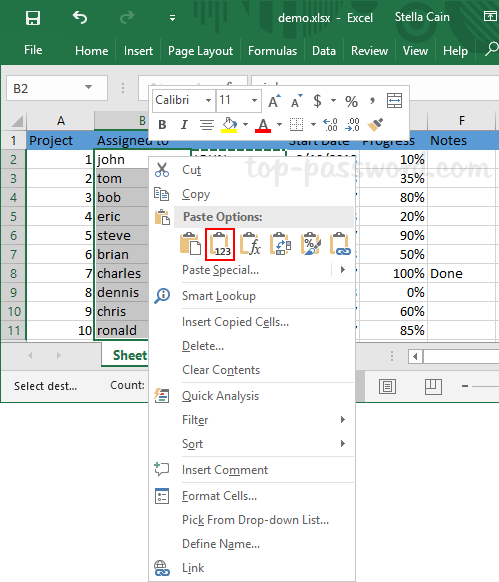


Navigate to the bottom, top, left corner, or right corner of the current data region, depending on which arrow you press. If the next cell is blank, the selection is extended to the next non-blank cell.

This extends the selection of cells to the last non-blank cell in the same column or row as the active cell. Shift+Space selects an entire row, while Ctrl+Space selects an entire column. In addition to the Shift+Arrow key method described above, Excel also has a couple of convenient functions for selecting larger areas of the spreadsheet. But there are a few Excel-specific shortcuts that will speed up your spreadsheet productivity.
SHORTCUT KEYS FOR CHANGE CASE IN WORD HOW TO
Read next: Your Office 365 Implementation Checklist – How to plan the switch Shortcuts for ExcelĪs mentioned previously, many of the above will also work in Excel. Pressing Ctrl+Shift+G will instantly bring up your word count to provide you with that all-important visual affirmation that you are, indeed, moving steadily towards your goal. Shift+Up/Down will also select entire lines, but once you want to select more than a paragraph at a time, you may find using the mouse is the more productive method. Shift+Left/Right will highlight one character at a time, Shift+Alt+Left/Right one word at a time, and Shift+Ctrl+Left/Right an entire line at a time. There’s no need to always use the mouse to highlight selected text Shift+Arrow keys will also perform this function. Alternatively, pressing F5 in Word opens a more comprehensive search tool that allows you to navigate to a specific page, section, or line of your document, as well as use the Find and Replace function.

Ctrl+F is also extremely useful in web browsers and across the Office suite. A dialog box will appear for you to input the web address that the text is to be linked to, and once you’ve entered the information, the selected text will turn into a blue, underlined hyperlink that can be clicked to visit the assigned web page.Īre you trying to find a specific section in a long document? Hit Ctrl+F for Find, allowing you to enter the word or phrase that you’re looking for and be taken directly to it. Highlight a word or sentence that you want to link to a webpage and press Ctrl+K. This one is handy in a number of situations – not just in Word, but also in PowerPoint and Excel, as well as in most online CMS editors. And if you want to tidy your document up by having the beginning and end of every line aligned neatly with your margins, you can justify with Ctrl+J. Want to put your address in the top right corner of a letter you’re sending? Align right with Ctrl+R. After that, you’ll most likely want to return to normal formatting for the main body of your text, in which case you can align left with Ctrl+L. Alternatively, you can press Shift+F3 to cycle through three styles: upper case, lower case, and lower case with the first letter of the sentence in capsĭo you need text right in the middle of the page for a title? You can center text with Ctrl+E. There’s no need to delete it all and type it out again: just highlight the relevant text and press Ctrl+Shift+A to turn it all lower case/upper case. Or you might just have typed out a whole paragraph with caps lock on, and now it looks like you’re screaming. There may be times when, for the purposes of clarity or emphasis, you want all of the text to be UPPER CASE. You can even use keyboard shortcuts to increase (Ctrl+]) or decrease (Ctrl+[) the font size by one point. Using any of these shortcuts will either apply or remove the formatting from the selected text or, if no text is selected, the formatting is applied to any text that is typed after. The three most popular formatting options for style and emphasis are italics (Ctrl+I), bold (Ctrl+B), and underlining (Ctrl+U). They can be used to stylize, emphasize, or add functionality to your written content. Let’s get more specific! Some of these shortcuts will still work across Excel and PowerPoint too, but they are related to inputting text.
SHORTCUT KEYS FOR CHANGE CASE IN WORD MAC
Although the examples given are for Windows, most of these also work on Mac if the control key is substituted for the command key: Some shortcuts will work wherever you are in the Microsoft universe, whether you’re in an Office program or a web browser. So forget your mouse streamline your workday with these time-saving keyboard shortcuts. We’ve compiled a list of the most common and helpful keyboard shortcuts to help you in your everyday tasks, from the basics to program-specific ones, and some information about how to keep track of them all. Keyboard shortcuts, or hotkeys, will help you save time in your daily tasks – and these add up to save a large amount of time, allowing for it to be used in a more productive manner.


 0 kommentar(er)
0 kommentar(er)
